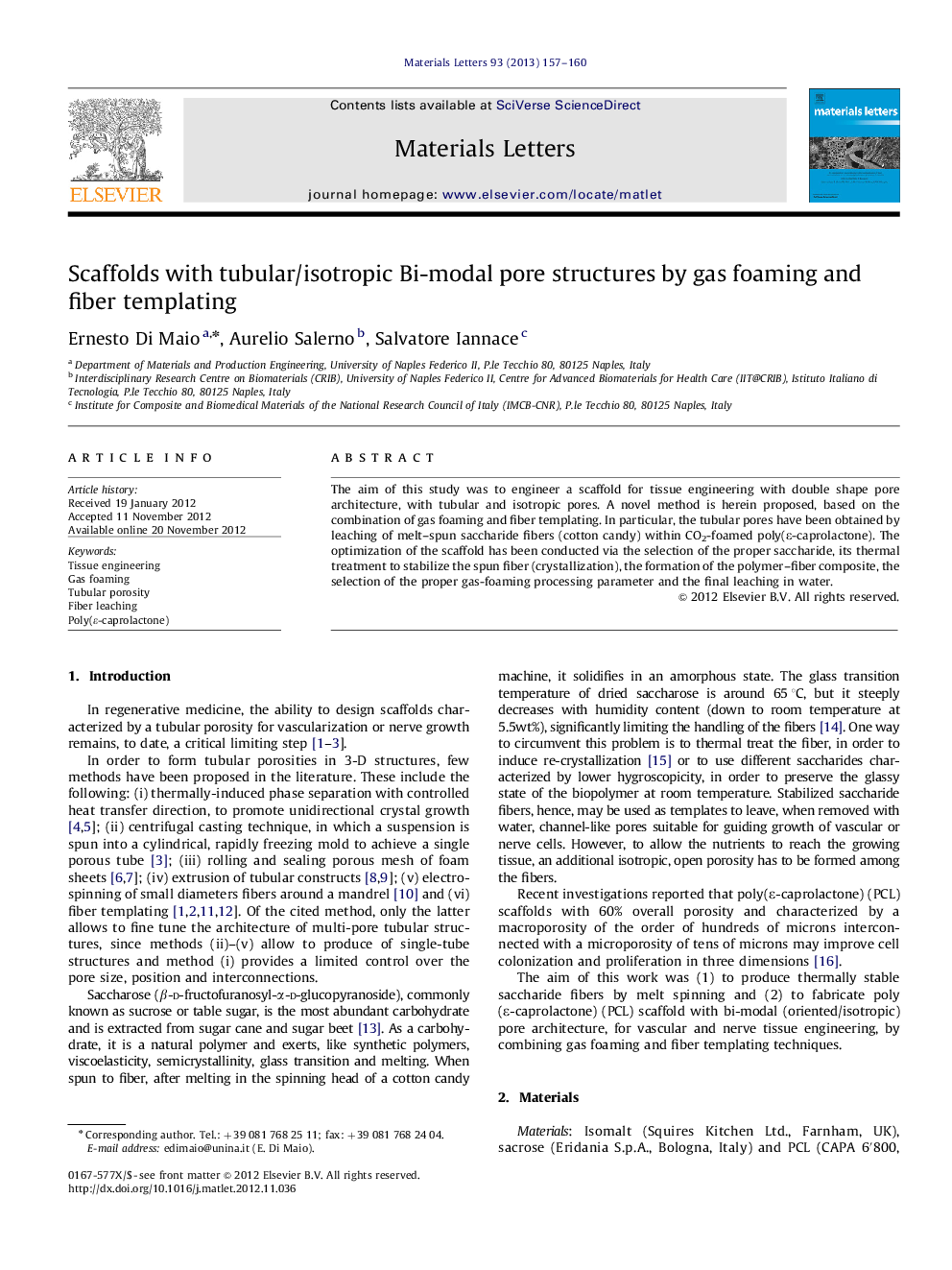| کد مقاله | کد نشریه | سال انتشار | مقاله انگلیسی | نسخه تمام متن |
|---|---|---|---|---|
| 1645556 | 1517294 | 2013 | 4 صفحه PDF | دانلود رایگان |

The aim of this study was to engineer a scaffold for tissue engineering with double shape pore architecture, with tubular and isotropic pores. A novel method is herein proposed, based on the combination of gas foaming and fiber templating. In particular, the tubular pores have been obtained by leaching of melt–spun saccharide fibers (cotton candy) within CO2-foamed poly(ε-caprolactone). The optimization of the scaffold has been conducted via the selection of the proper saccharide, its thermal treatment to stabilize the spun fiber (crystallization), the formation of the polymer–fiber composite, the selection of the proper gas-foaming processing parameter and the final leaching in water.
It has been proved how, by a detailed investigation on the polymer characteristics of selected saccharides and a creative speculation on process engineering, it is possible to produce polymeric scaffolds characterized by a dual scale and dual shape pore architecture in a cheap and simple way. In particular, Figure optionsDownload as PowerPoint slideHighlights
► Melt spun isomalt fibers as water-soluble template for vascular or nerve reconstruction.
► Thermal treatment to stabilize the fibrillar morphology and produce composites with PCL.
► Gas foamed PCL + water leaching of the fibers for final bi-modal pore structure.
Journal: Materials Letters - Volume 93, 15 February 2013, Pages 157–160